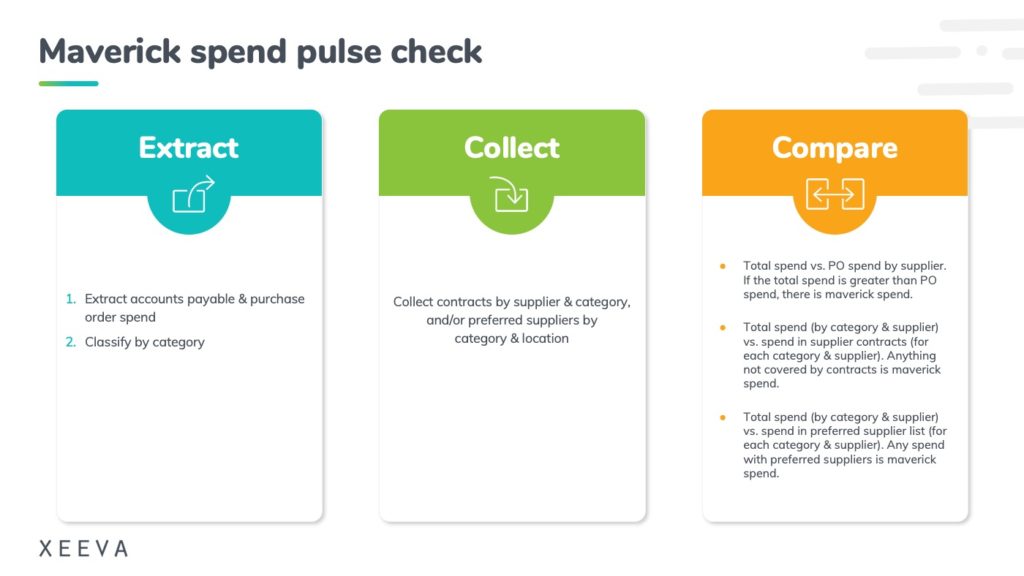Procure-to-Pay
A simple 3-step process for identifying maverick spend
During a recent webinar, our Chief Strategy Officer, Steve Griffiths, shared a simple 3-step process for identifying maverick spend. Read on or watch the short clip below to learn what this process is!
If you want to learn more about maverick spend, you can watch the full webinar here!

Related: Why is maverick spend a problem for procurement organizations (and when is it not)?
In a traditional way, if you want to get your hands around that average spend and attack it from a visibility perspective, there’s a 3-step process:
- Extract
You need to extract both your accounts payable and the purchase order data, and you need to classify that data by category (there’ll be a good reason for that later on). - Collect
You’ll also need to collect all the contracts you have in place today, or at least those of your preferred suppliers. - Compare
Once you’ve extracted your data and collected your contracts, you can start to compare them:- If you look at the AP spend vs. the PO spend vs. supplier, and it’s significantly different, then there’s non-compliancy and maverick spend going on there.
- If the total spend by category and supplier is not with preferred suppliers, then you also have a non-compliancy problem.
- And if the spend is not with suppliers that you have contracts with, you also have a compliancy and maverick spend problem.

The advantage you have with technology is that it actually allows you to attack it as you’re driving through the spend.
Now, remember, 20-30% of your spend is always going to be non-compliant spend because it tends to be tail-end spend, or special circumstances, or the like. But many companies run up 40%, 60%, or even 70% non-compliant spend. That’s an issue, and this is kind of a good way to get at it from a rear-view mirror perspective. But the advantage you have with technology is that it actually allows you to attack it as you’re driving through the spend. Contact us today to learn how!